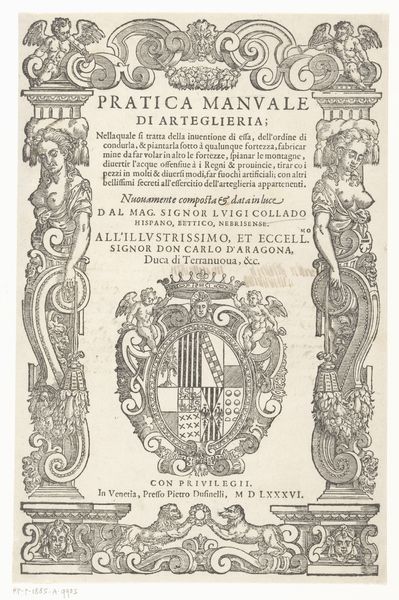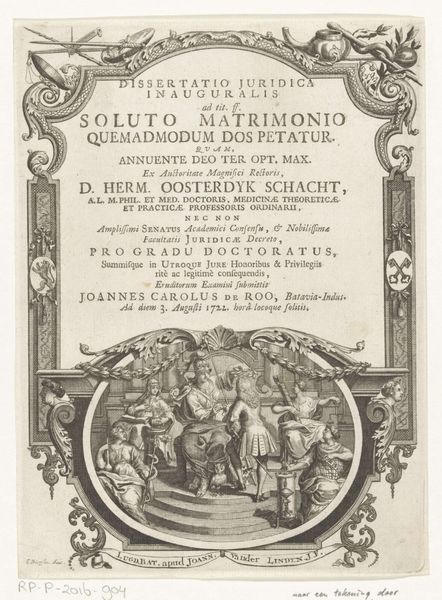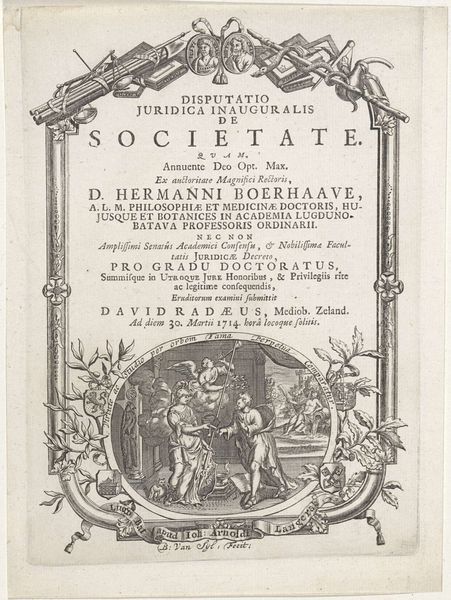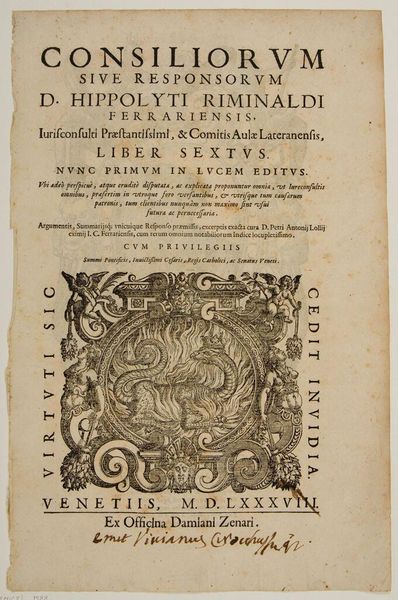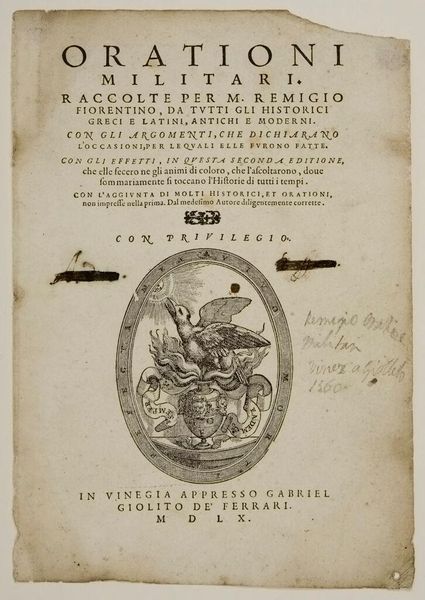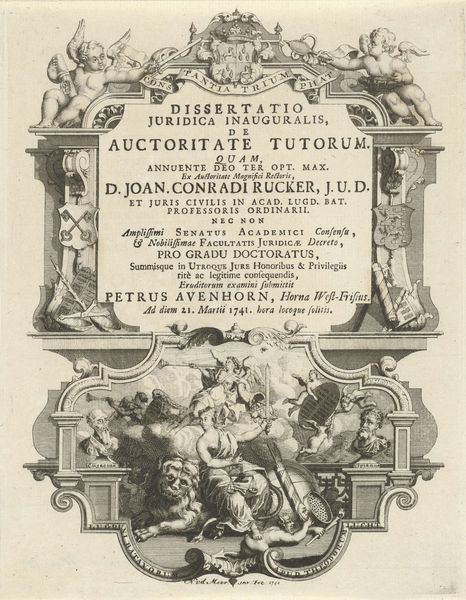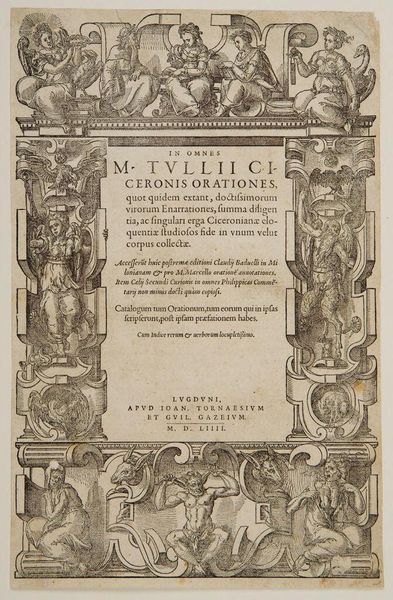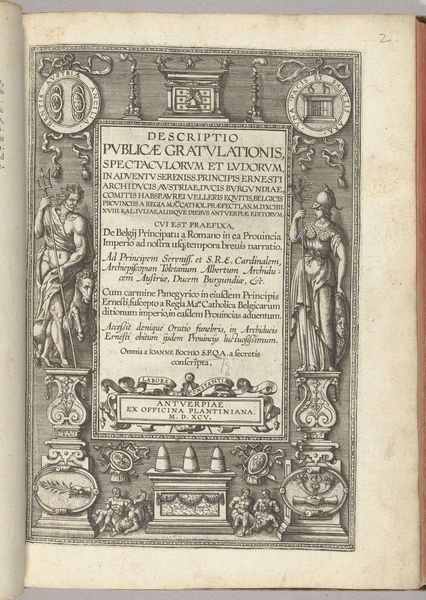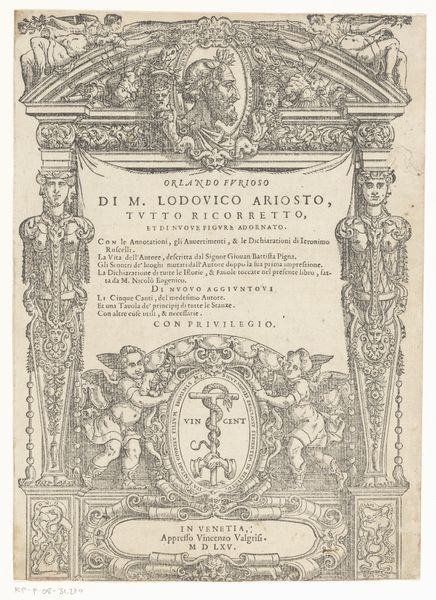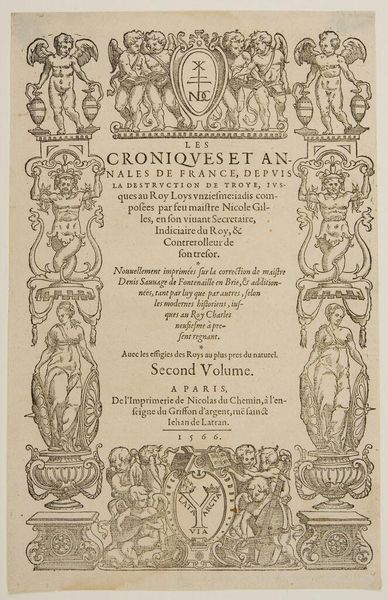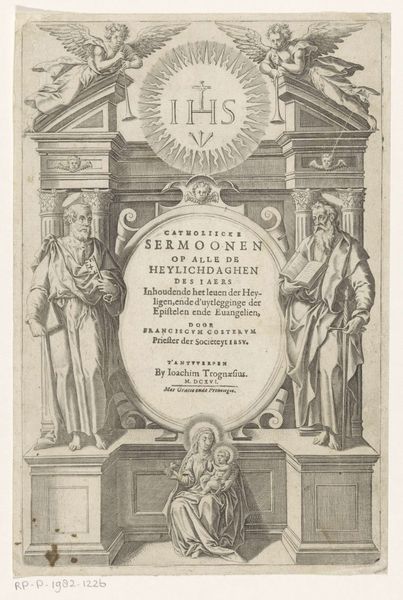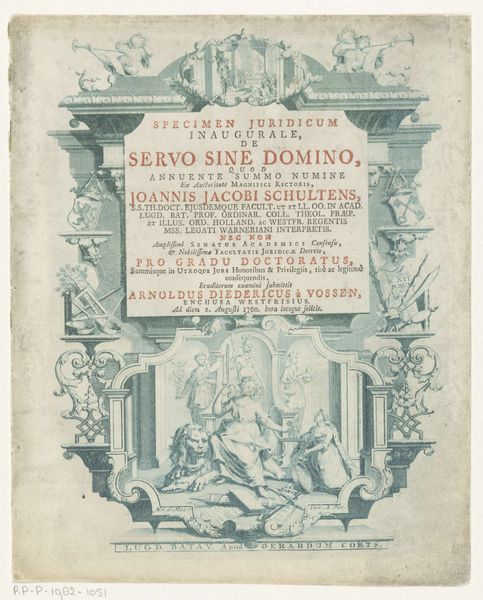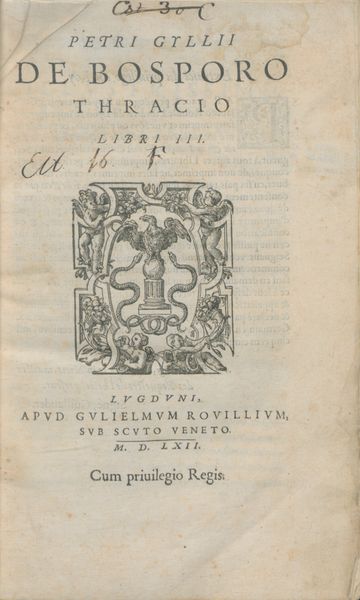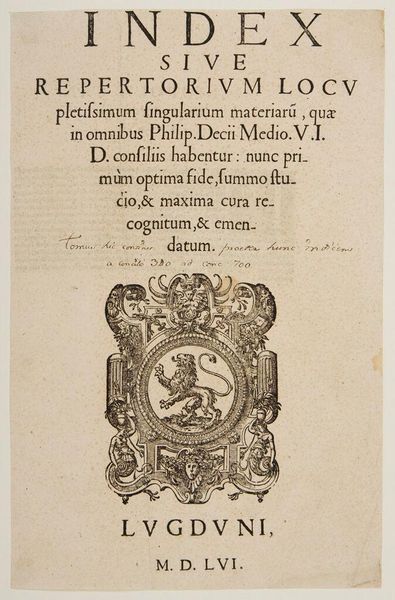
Buste van Aristophanes en putto met masker, in cartouche 1759 - 1760
0:00
0:00
print, engraving
#
baroque
# print
#
history-painting
#
engraving
Dimensions: height 70 mm, width 94 mm, height 260 mm, width 212 mm
Copyright: Rijks Museum: Open Domain
Editor: Here we have Abraham Delfos's print, "Bust of Aristophanes and Putto with Mask, in Cartouche," created around 1759 or 1760. It’s an engraving, with very fine lines depicting the titular bust within an ornate border. The print’s old, clearly, and a bit… academic-looking? I’m curious, what strikes you about this image, especially in its historical context? Curator: Well, considering the social function of imagery during the Enlightenment, this print acts as a visual marker of intellectual authority. Aristophanes, a celebrated figure of classical Greece, is presented as a bastion of learning. What’s intriguing is how this image circulated within specific social spheres. Editor: You mean, like, who was *meant* to see it? Curator: Precisely! This was likely intended for scholars and the learned elite. Prints like this were often frontispieces for books. They visualized and legitimized the texts that followed, signaling erudition and appealing to a particular class of educated buyers. The publisher’s name, "Academiae Typographos", even promotes their credentials to the elite intellectual class. Consider how the "mask" is a theatrical symbol, and this, combined with Aristophanes, ties to comedy, wit, and freedom of speech within classical culture. Editor: So, it's about more than just the image itself, but about how it functioned within a system of knowledge and power? It feels a little less 'art for art's sake' and more 'art for demonstrating status’? Curator: Exactly. It demonstrates the market demand, but also a belief in the political importance of classical ideas for a contemporary society. It’s not simply a portrait, it's a carefully constructed symbol meant to reinforce and perpetuate a certain cultural hierarchy. Editor: That’s fascinating; it changes how I look at even a simple-seeming engraving. Seeing art this way allows for better historical insight. Curator: Absolutely. It demonstrates art’s public role, influencing perceptions of classical knowledge and the sociopolitical landscape in which it circulated.
Comments
No comments
Be the first to comment and join the conversation on the ultimate creative platform.
